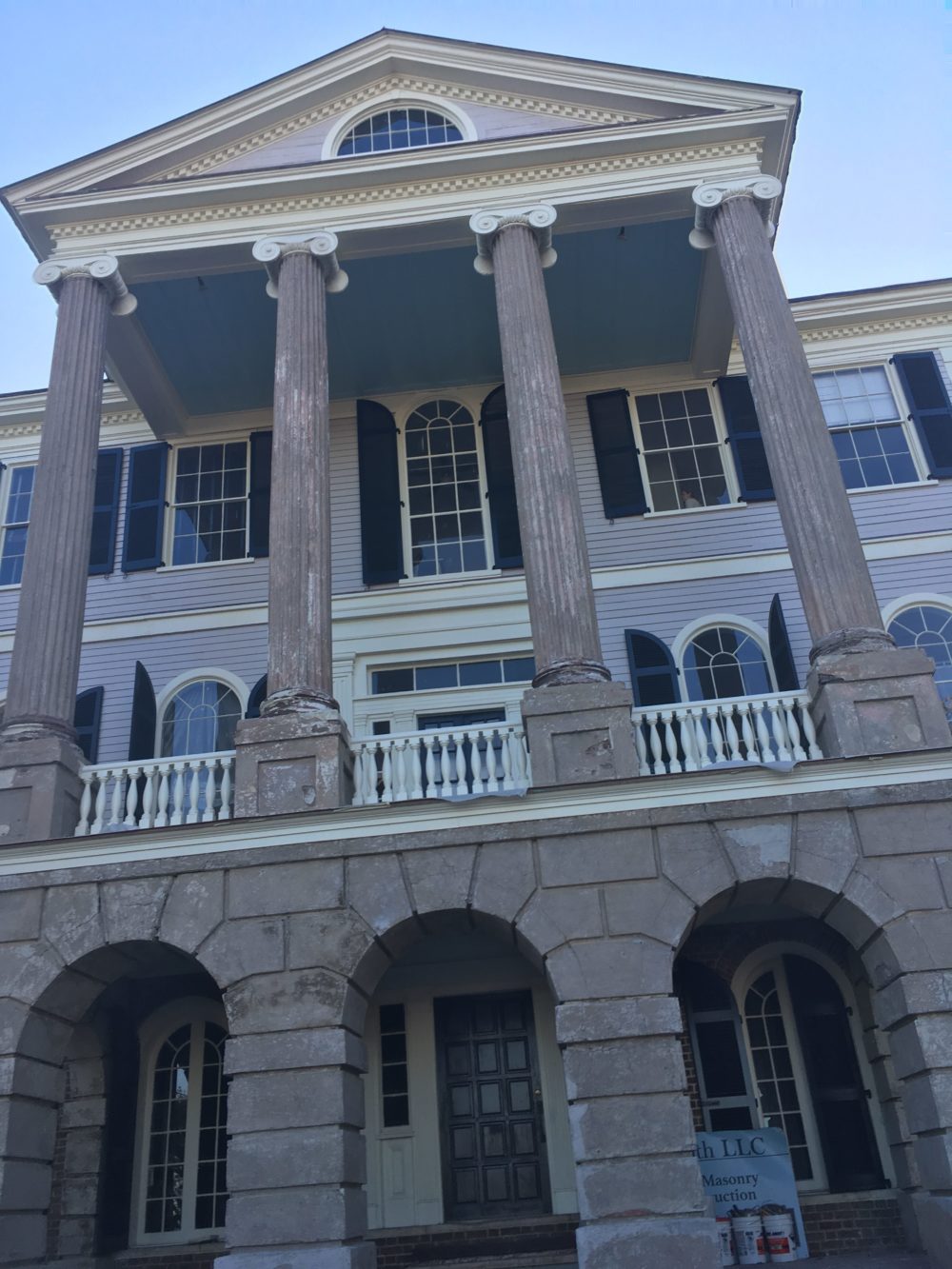By Christina R. Butler
Bounded by Meeting Street on the west, East Bay Street on the east, Wraggborough neighborhood on the south, and Stuart Street on the north, the East Side lies in the heart of historic Charleston, in short walking distance to the excitement of upper King Street while keeping a distinctly residential feel.


Originally called Hampstead, the neighborhood was laid out by planter, merchant, and statesman Henry Laurens in 1769 as an elite residential suburb modeled after the namesake borough in London. The neighborhood still bears its historic street names, including Amherst, Nassau, Drake, and Hanover, as well as part of the original neighborhood square, Hampstead Mall, at the intersection of America and Columbus Streets. Early Hampstead featured grand houses situated on large lots with room for outbuildings and even the occasional private dock for creek or river-side properties.
Hampstead’s early buildings were damaged during the Revolution and the War of 1812 as the American forces preemptively fortified the upper peninsula against British invasion. The neighborhood’s architectural character changed during the antebellum rebuilding, from large suburban houses to smaller middle and working class wood frame houses. Hampstead became home to several industrial buildings, such as the Cigar Factory complex (which began its life as a cotton compress in 1882), and Eason’s Foundry at the corner of Nassau and Columbus Streets, which is now apartments. In the nineteenth and early twentieth century, Hampstead was an integrated neighborhood of Irish and German immigrants, enslaved people and free people of color (before the Civil War), and native born Charlestonians employed as dock workers, day laborers, and skilled tradesmen.

The neighborhood’s architecture reflects over two hundred years of varied styles and uses and includes corner stores, schools, churches, and residences constructed as early as circa 1800 and as recently as 2019. Historic maps show lost tenements for railroad workers and a city-operated Alms House that sat on Columbus Street near the Trident Technical College campus. St. John’s Episcopal Chapel, built in 1839, is the oldest surviving religious building, and served as a mission church open to black and white Hampstead residents alike. Most residences are iconic wood frame Charleston single houses with simple trim work or Victorian balustrades, reflecting the every-man character of historic Hampstead. There are also some surviving villas like the Grimke-Presqu’ile and Faber-Ward houses on East Bay Street, which boasted Cooper Riverfront views before modern port development, as well as abundant examples of one-story freedman’s cottages, especially in the northern half of Hampstead.

By the mid twentieth century, Hampstead’s demographics shifted as residents moved to new suburbs outside of the city center (a change paralleled in cities across the country). Hampstead became predominantly African American and became colloquially known as the East Side, a name that is used much more widely today than the historic Hampstead moniker. After several decades of decline and vacancy, the East Side is seeing renewed interest, with residents flocking to the neighborhood for its character and proximity to Charleston nightlife and the beautifully renovated Cigar Factory. Today, the East Side offers a unique opportunity to live in one of the few remaining diverse and eclectic boroughs of the city.
See what properties are currently available in Hampstead by calling our Charleston real estate agents or downloading our mobile app. Our realtors are familiar with the area and stay up to date on the available properties in Hampstead and downtown Charleston. We look forward to working with you and finding that perfect home!
Sources:
- -Charleston Sanborn Fire Insurance maps
- -Kimberly Grimes, et al. Between the Tracks: The Heritage of Charleston’s East Side. Charleston Museum, 1987.
- -Charleston City Directories
-City of Charleston Planning and Urban Development. East Side Master Plan. City of Charleston, 1984.




Greetings! Very useful advice in this particular article! It is the little changes which will make the greatest changes. Thanks for sharing!|
magnificent issues altogether, you just received a new reader. What might you suggest in regards to your put up that you simply made a few days ago? Any certain?
Have you ever considered about adding a little bit more than just your articles? I mean, what you say is fundamental and all. But think about if you added some great photos or videos to give your posts more, “pop”! Your content is excellent but with pics and video clips, this site could definitely be one of the best in its niche. Fantastic blog!
This is really interesting, You’re a very skilled blogger. I’ve joined your rss feed and look forward to seeking more of your excellent post. Also, I have shared your website in my social networks!
I’ve been absent for some time, but now I remember why I used to love this website. Thanks , I will try and check back more often. How frequently you update your site?